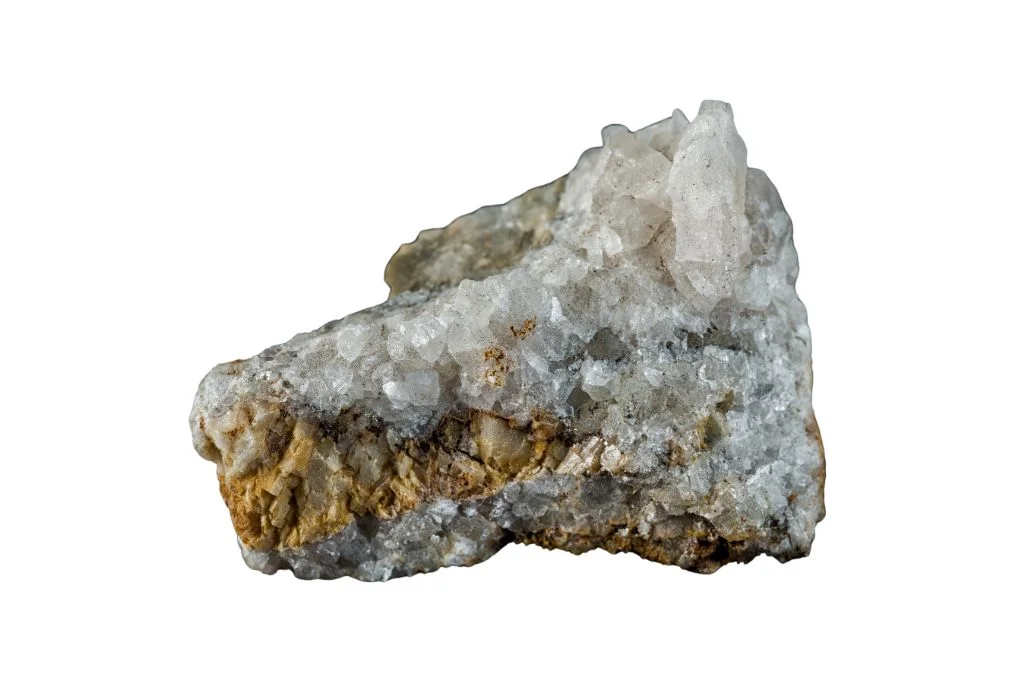Color and Appearance
Ankerite is a carbonate mineral that exhibits a range of colors, typically appearing in shades of white, pale yellow, or light brown. In some instances, it may also display a pinkish or greenish tint. The crystal’s color can vary depending on its chemical composition and the presence of impurities.
Crystal Structure
Ankerite crystallizes in the trigonal system, forming rhombohedral crystals. These crystals are often small and well-formed, with a distinct rhombohedral shape. In some cases, ankerite may also occur as massive or granular aggregates, filling veins or cavities in rocks.
Physical Characteristics
One of the notable physical characteristics of ankerite is its perfect rhombohedral cleavage, which allows the mineral to break along smooth planes. It has a vitreous to pearly luster, giving it a shiny appearance when light reflects off its surface. Ankerite has a hardness of 3.5 to 4 on the Mohs scale, making it relatively soft compared to many other minerals.
Unique Features
What makes ankerite stand out is its close relationship to dolomite and its tendency to form solid solutions with other carbonate minerals. This property allows ankerite to incorporate varying amounts of calcium, magnesium, iron, and manganese into its crystal structure. As a result, ankerite can display subtle variations in its physical properties and appearance, making it an intriguing subject for mineralogists and collectors alike.
Occurrence and Associations
Ankerite is often found in association with other carbonate minerals, such as calcite and dolomite. It frequently occurs in hydrothermal veins, metamorphic rocks, and as a secondary mineral in sedimentary deposits. The presence of ankerite can be an indicator of specific geological conditions, making it valuable for understanding the formation and alteration of rock formations.
Ankerite Historical and Cultural Significance
Ankerite, a calcium iron carbonate mineral, has a limited but intriguing historical and cultural significance. This mineral has been found in various archaeological sites, particularly in ancient mining areas. Its presence has helped archaeologists and geologists understand historical mining practices and mineral formations. In some cultures, ankerite has been associated with the earth element due to its earthy colors and connection to iron deposits.
Metaphysical Associations
In the realm of crystal healing and metaphysical practices, ankerite is believed to possess grounding and stabilizing properties. Practitioners often associate it with the root chakra, claiming it can help balance and align this energy center. Some believe that ankerite can enhance one’s connection to the earth and promote a sense of stability in one’s life. It is also thought to aid in decision-making processes and foster a practical approach to problem-solving.
Common Uses and Applications
Ankerite finds its primary use in industrial applications, particularly in the steel-making process. Its iron content makes it valuable as a source of iron ore in some deposits. In modern times, it has gained popularity among mineral collectors due to its interesting crystal formations and varied colors, ranging from pale yellow to brown. Some artisans incorporate ankerite into jewelry designs, appreciating its earthy tones and unique appearance.
Believed Benefits
Those who work with crystals for healing purposes attribute several benefits to ankerite. It is said to promote emotional balance and help individuals feel more centered and focused. Some claim that it can aid in the relief of stress and anxiety by fostering a sense of calm and stability. In physical healing, ankerite is sometimes used in crystal layouts or as a massage tool, with practitioners believing it can help with issues related to the lower back, legs, and feet. However, it’s important to note that these benefits are based on traditional beliefs and anecdotal evidence rather than scientific research.

